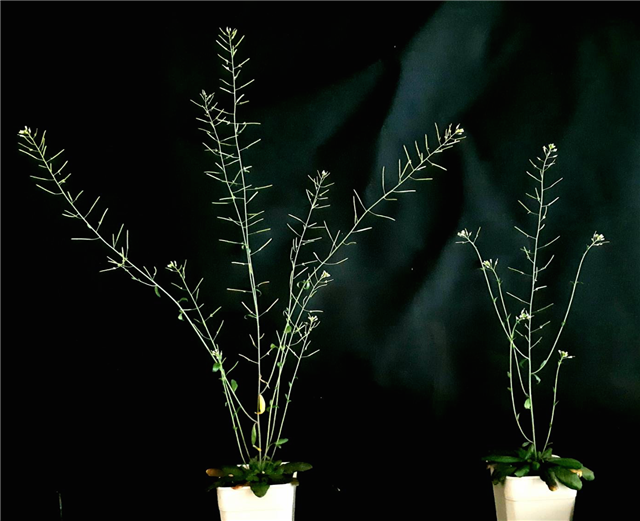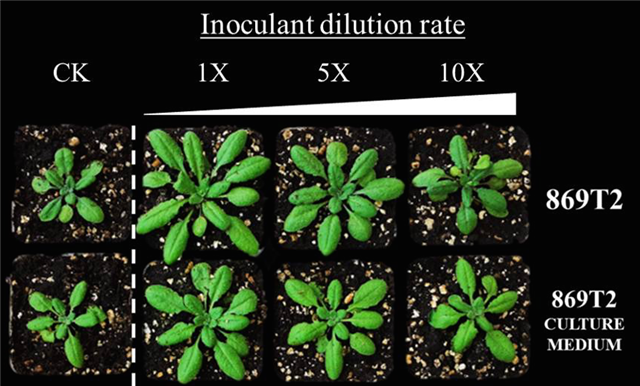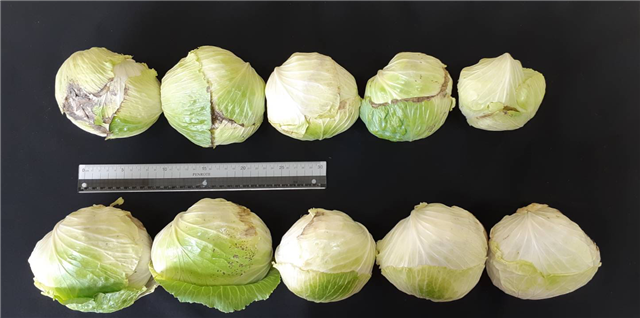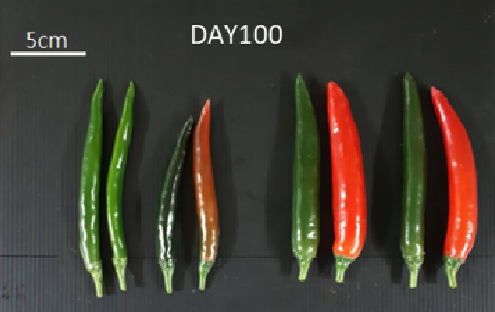Plant biostimulants include diverse microorganisms and active metabolites that conduct beneficial effects on plants and improve their capability to face adverse environmental conditions. As one of the emerging issues in agriculture is the decreasing productivity in both quality and quantity of agroproducts caused by various biotic and abiotic stresses, thus biostimulants have been proposed as promising agronomic tools to reduce either abiotic or biotic stresses. Since the global market for biostimulants has been projected to reach more than $3 billion by 2022 (Markets & Markets), many scientists and companies are developing novel biostimulants products through identification of those effective bioactive molecules that could able to elicit specific plant responses against abiotic and biotic stresses.
On the other hand, microbial endophytes including fungi and bacteria represent an endosymbiotic group that colonizes internal plant tissues without causing any adverse effects and benefits plant growth by secreting functional substances. Endophytes are known to be involved in the synthesis of siderophores for iron acquiring by plants, releasing plant hormones, nitrogen fixation, solubilization of immobilized phosphorus, nutrient cycling, secretion of volatile organic compounds, induction of plant pathogenic resistance and stress tolerance. However, endophytes are still remained as one of the least studied and unexplored groups of microbes that need to be elucidated for providing comprehensive knowledge regarding beneficial plant-microbe interactions.
Although the banana has long been one of the most important crops in Taiwan, Fusarium wilt caused by Fusarium oxysporum f. sp. cubense tropical race 4 (Foc TR4), has become the most lethal disease of banana and threatens both the quality and quantity of banana production global wide. As more recent reports have demonstrated examples of endophytic bacteria that can efficiently improve plant growth and shown as good candidates for biological control agents, this prompted us that pre-inoculation with beneficial endophytes through banana plantlets might serve as an effective strategy for either biological control or growth promotion of banana plant. In our previous study, a total number of 56 endophytic isolates from different plants including reeds, vetiver grass, and banana plants were screened, where the diversity and community of endophytes within banana plants were analyzed. An endophytic bacterium Burkholderia cenocepacia 869T2 (Now formally identified as Burkholderia seminalis 869T2) from vetiver that showed high ability to inhibit Foc TR4 mycelia, and it could not only decrease the incidence of Fusarium wilt disease but also promote banana plant growth. Endophytic B. seminalis 869T2 decreased the disease incidence of Fusarium wilt on treated banana plants to 3.4 %, comparing to 24.5 % of non-inoculated plants infected in the field test within a 7-month period. Furthermore, significant growth promoting of 869T2 inoculated banana plants was observed in field experiments (Ref. 1).
To understand the plant beneficial effects of endophytic strain 869T2, we apply the strain to Arabidopsis thaliana, and confirmed the effect of plant growth promotion could be applied to other kind of plant.

Fig. 1. The inoculation of endophytic strain 869T2 on Arabidopsis thaliana where the right hand is control plant and left hand is 869T2 inoculated plant.

| Fig. 2. Dosage dependent effects were found when 869T2 culture medium (without bacteria cells) was applied to Arabidopsis thaliana. |
As the results show that the strain could be suitable for agricultural crops, we try to apply the strain to crops such as cabbage and chili.

Fig. 3. Cabbage that treated without 869T2 (upper) and treated with 869T2 (below).

| Fig. 4. Chili that treated with 869T2 (right) and without (left). |
From genomic sequence data and image mass analysis, we found that a kind of cyclic dipeptides, pyrroloquinoline quinone, may act as one of the potential biostimulants for plant. But the real challenge lies in taking these potential candidates from laboratory to land. So, we are now intensively study this metabolite for its further application.
Endophytes and their application as biostimulants in Taiwan
Plant biostimulants include diverse microorganisms and active metabolites that conduct beneficial effects on plants and improve their capability to face adverse environmental conditions. As one of the emerging issues in agriculture is the decreasing productivity in both quality and quantity of agroproducts caused by various biotic and abiotic stresses, thus biostimulants have been proposed as promising agronomic tools to reduce either abiotic or biotic stresses. Since the global market for biostimulants has been projected to reach more than $3 billion by 2022 (Markets & Markets), many scientists and companies are developing novel biostimulants products through identification of those effective bioactive molecules that could able to elicit specific plant responses against abiotic and biotic stresses.
On the other hand, microbial endophytes including fungi and bacteria represent an endosymbiotic group that colonizes internal plant tissues without causing any adverse effects and benefits plant growth by secreting functional substances. Endophytes are known to be involved in the synthesis of siderophores for iron acquiring by plants, releasing plant hormones, nitrogen fixation, solubilization of immobilized phosphorus, nutrient cycling, secretion of volatile organic compounds, induction of plant pathogenic resistance and stress tolerance. However, endophytes are still remained as one of the least studied and unexplored groups of microbes that need to be elucidated for providing comprehensive knowledge regarding beneficial plant-microbe interactions.
Although the banana has long been one of the most important crops in Taiwan, Fusarium wilt caused by Fusarium oxysporum f. sp. cubense tropical race 4 (Foc TR4), has become the most lethal disease of banana and threatens both the quality and quantity of banana production global wide. As more recent reports have demonstrated examples of endophytic bacteria that can efficiently improve plant growth and shown as good candidates for biological control agents, this prompted us that pre-inoculation with beneficial endophytes through banana plantlets might serve as an effective strategy for either biological control or growth promotion of banana plant. In our previous study, a total number of 56 endophytic isolates from different plants including reeds, vetiver grass, and banana plants were screened, where the diversity and community of endophytes within banana plants were analyzed. An endophytic bacterium Burkholderia cenocepacia 869T2 (Now formally identified as Burkholderia seminalis 869T2) from vetiver that showed high ability to inhibit Foc TR4 mycelia, and it could not only decrease the incidence of Fusarium wilt disease but also promote banana plant growth. Endophytic B. seminalis 869T2 decreased the disease incidence of Fusarium wilt on treated banana plants to 3.4 %, comparing to 24.5 % of non-inoculated plants infected in the field test within a 7-month period. Furthermore, significant growth promoting of 869T2 inoculated banana plants was observed in field experiments (Ref. 1).
To understand the plant beneficial effects of endophytic strain 869T2, we apply the strain to Arabidopsis thaliana, and confirmed the effect of plant growth promotion could be applied to other kind of plant.
Fig. 1. The inoculation of endophytic strain 869T2 on Arabidopsis thaliana where the right hand is control plant and left hand is 869T2 inoculated plant.
As the results show that the strain could be suitable for agricultural crops, we try to apply the strain to crops such as cabbage and chili.
Fig. 3. Cabbage that treated without 869T2 (upper) and treated with 869T2 (below).
From genomic sequence data and image mass analysis, we found that a kind of cyclic dipeptides, pyrroloquinoline quinone, may act as one of the potential biostimulants for plant. But the real challenge lies in taking these potential candidates from laboratory to land. So, we are now intensively study this metabolite for its further application.